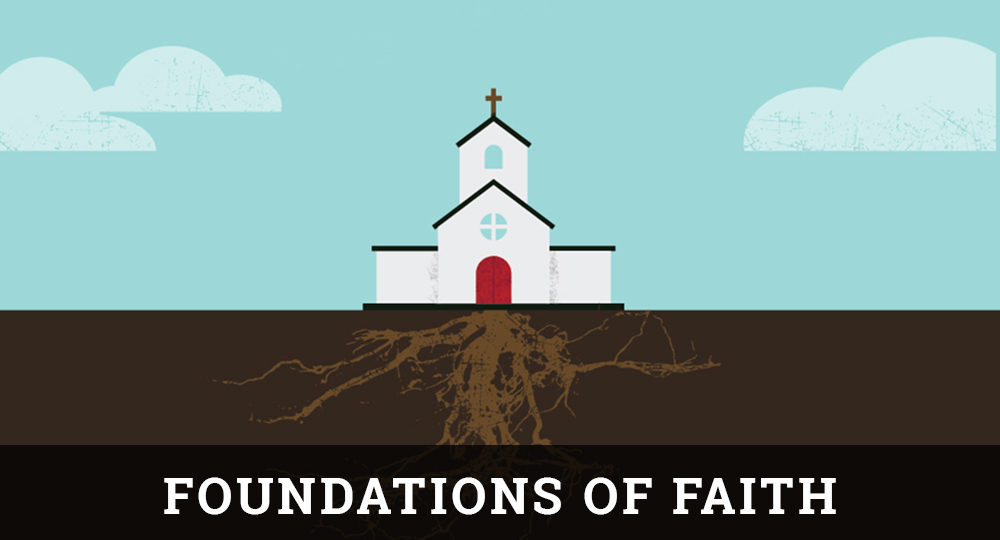The Incarnation of Jesus Christ Conclusion
Biblical Evidences for Christ’s Incarnation
The previous article in this series presented Christ’s human genealogies and the witness of the Apostle John, the Apostle Paul, and the Book of Hebrews as evidences for His incarnation. More such evidences will now be examined.
The Witness of the Apostle Peter
Acts 2:22–24: Peter identified Jesus of Nazareth as “a man” (v. 22). The word he used refers to an adult male human being in contrast to women and children (Mt. 14:21) and pure spirit beings (Acts 14:15; Rom. 1:23) [Albrecht Oepke, “aner,” Theological Dictionary of the New Testament, vol I, pp. 361–2].
Peter also declared that Jesus was “crucified and slain” (v. 23). The word translated crucified means “fix,” “fasten to,” or “nail to” (William F. Arndt and F. Wilbur Gingrich, A Greek-English Lexicon of the New Testament, p. 725). Peter used it to describe the nailing of Jesus to the cross (Ibid.). The word translated slain refers to “killing by violence, in battle, by execution, murder, or assassination” (Ibid., p. 54).
Peter asserted that Jesus was resurrected from the dead (v. 24), and he made it clear that this Jesus who was crucified and resurrected from the dead was Christ (vv. 30–32, 36).
Through these statements, Peter clearly indicated that while on earth, Christ was a male human being with a physical body that was nailed to a cross, died, and was resurrected from the dead. He was not just a spirit being.
1 Peter 1:18–19, 21: Peter wrote that sinful human beings were “redeemed…with the precious blood of Christ” (vv. 18–19), and that God resurrected Christ from the dead (v. 21). These statements signify that Christ had a physical human body that contained blood, died, and was resurrected.
1 Peter 2:24:Peter said that Christ “his own self bore our sins in his own body on the tree…by whose stripes ye were healed.” Through the possessive pronoun his in the expression “his own body,” Peter made it clear that Christ possessed a physical body of His own. It was not the body of another man that was nailed to the cross.
The word translated stripes refers to welts, bruises, or wounds caused by blows to a body (Arndt and Gingrich, Greek-English Lexicon, p. 532). Peter thereby signified that Christ had a literal physical body that suffered welts, bruises, and wounds. He did not have a non-physical phantom appearance of a body.
The Witness of Pilate
After Pontius Pilate, the Roman procurator, examined Christ, he said to the crowd, “I am innocent of the blood of this righteous person” (Mt. 27:24). He thereby testified that Christ had a physical human body containing blood. When he brought Christ before the crowd, he declared, “Behold the man!” (Jn. 19:5). The word translated man refers to human beings in contrast to animals, plants, angels, and God (Arndt and Gingrich, Greek-English Lexicon, p. 67). Thus, Pilate was declaring that Christ was a human being.
The Witness of the Angel Gabriel
Gabriel told the virgin Mary that she would conceive in her womb and give birth to a son named Jesus (Lk. 1:31, 35). He indicated that that son would be a physical descendant of King David (v. 32). Gabriel’s statements explained how the eternal, divine Christ would become incarnated—by conception in and birth through a human mother.
Among the Jews in biblical times, the term son was “often used to denote the relationship which determines the nature of a man” (Eduard Lohse, “huios,” Theological Dictionary of the New Testament, vol. VIII, p. 358). In light of this, Gabriel’s statements implied that as a result of His biological son relationship to a human mother, Jesus Christ would have a complete human nature.
The Witness of Elisabeth
When Mary visited her relative, the Holy Spirit supernaturally prompted Elisabeth to say to Mary, “blessed is the fruit of thy womb” (Lk. 1:42). Norval Geldenhuys explained the significance of Elisabeth’s statement as follows: “By these words it is clearly indicated that, although begotten by the Holy Ghost, Jesus, according to His human nature, was really born of the flesh and blood of Mary, and is therefore truly Man” (Commentary on the Gospel of Luke, p. 83).
Elisabeth also called Mary “the mother of my Lord” (v. 43). The combination of the title mother and the expression the fruit of thy womb indicated that Mary was the biological human source of the one born through her; therefore, the one born was also human. Because by New Testament times the title Lord was commonly used to communicate the idea of absolute deity, the fact that the Holy Spirit prompted Elisabeth to call the one born of Mary “my Lord” was significant. It implied that Jesus Christ was more than a human being. He was a divine being incarnated through a human birth.
The Records of Jesus Christ’s Birth and Presentation in the Temple
The biblical records of Christ’s birth and presentation in the Temple present terms and expressions that signify that Christ became incarnated.
Matthew 1:18 refers to “the birth of Jesus Christ,” “his mother, Mary,” and the fact that Mary “was found with child.” Verse 25 states that she “brought forth her first-born son.”
Matthew 2 begins with, “Now when Jesus was born in Bethlehem of Judæa” (v. 1). It records the wise men’s question, “Where is he that is born King of the Jews?” (v. 2) and Herod’s inquiry concerning “where the Christ should be born” (v. 4). It also relates that the wise men “saw the young child with Mary, his mother” (v. 11).
Luke 2 records that Mary’s “days were accomplished that she should be delivered. And she brought forth her first-born son, and wrapped him in swaddling clothes, and laid him in a manger” (vv. 6–7). It presents the angel’s proclamation to the shepherds: “unto you is born this day in the city of David a Savior, who is Christ the Lord…Ye shall find the babe wrapped in swaddling clothes, lying in a manger” (vv. 11–12).
Luke 2 also refers to Christ’s conception in Mary’s womb and His circumcision (v. 21), and relates that He was brought to Jerusalem to be presented to the Lord because He was a “male that openeth the womb” (vv. 22–23). mere phantom or pure spirit being would not have a human birth or mother and would not be a male that opens the womb. In addition, because a phantom or spirit being would not have a physical body, it could not be wrapped in swaddling clothes, laid in a manger, or circumcised.
The Completeness of Christ’s Incarnation
If in His incarnation Christ had taken to Himself a human body but not a complete human nature, His incarnation would have been incomplete. He would not have become a total human being. The Bible gives evidences to the effect that His incarnation was complete—that He became a total human being with a complete human nature.
Christ experienced normal human development. Luke wrote that “the child grew” (2:40), meaning that Christ experienced normal, human, physical growth (Gustav Stahlin, “prokope,” Theological Dictionary of the New Testament, vol. VI, p. 713).
Luke also stated that “Jesus increased in wisdom and stature” (2:52). The word translated stature usually referred to age (Johannes Schneider, “helikia,” Theological Dictionary of the New Testament, vol. 11, p. 942). Thus, although the eternal Christ possessed all knowledge and wisdom and was ageless in the realm of His deity, He experienced normal human development in wisdom and age in the realm of His humanity.
As a child, Christ was subject to His parents. Although in the realm of His deity He was sovereign Lord over them, as a child He voluntarily submitted Himself to their paternal authority in the realm of His humanity (Lk. 2:51).
Christ experienced human emotions. When He witnessed the sorrow caused by Lazarus’ death, He “groaned in the spirit, and was troubled” and “wept” (Jn. 11:33, 35). The word translated groaned refers to anger or displeasure that He experienced toward death because of its devastating effects (Arndt and Gingrich, Greek-English Lexicon, p. 254). The word translated troubled indicates that He was agitated in mind or spirit (Ibid., p. 813). His weeping was prompted by grief.
The night before His crucifixion, Christ experienced “agony” as He prayed earnestly to God the Father (Lk. 22:44). The word for agony refers to the inner conflict, tension, or anxiety a person experiences “in face of imminent decisions or disasters” (Ethelbert Stauffer, “agonia,” Theological Dictionary of the New Testament, vol. I, p. 140).
Christ experienced human limitations. He experienced physical hunger for food after fasting for 40 days and nights (Mt. 4:2) and while walking from Bethany to Jerusalem (Mk. 11:12). He had to sleep (Lk. 8:23) and was tired from walking a long distance (Jn. 4:6). He became thirsty while on the cross (Jn. 19:28).
Christ had a human soul and spirit. He talked about His soul being “exceedingly sorrowful” (Mt. 26:38) and “troubled” (Jn. 12:27).
The Scriptures state that He “sighed deeply in his spirit” (Mk. 8:12) and commended His spirit into the Father’s hands (Lk. 23:46).
The Permanence of Christ’s Incarnation
The change Christ experienced in the incarnation was permanent. He did not cease being incarnate after He finished His redemptive work. Once He became a human being, He remained a human being forever. Several things indicate this.
First, Christ still had a physical human body with the wounds of crucifixion after His resurrection. People held Him by the feet after He rose from the dead (Mt. 28:9). In one of His post-resurrection appearances He said, “Behold my hands and my feet, that it is I myself; handle me and see; for a spirit hath not flesh and bones, as ye see me have” (Lk. 24:39).
Second, Christ is a human being as He performs His present mediatorial ministry in heaven. Several years after He ascended to heaven, the Apostle Paul wrote, “For there is one God, and one mediator between God and men, the man, Christ Jesus” (1 Tim. 2:5). The word translated man refers to a human being (Arndt and Gingrich, Greek-English Lexicon, p. 67).
Third, several decades after His ascension to heaven, Christ told the Apostle John that He was still “the root and offspring of David” (Rev. 22:16).
Fourth, Christ signified that He will still be “the Son of man” at His future Second Coming (Mt. 24:30; 26:64).
Conclusion
The Bible clearly reveals that through incarnation at a point in time, the eternal, divine Christ became a human being with a physical body and a human nature. The next article in this series will explore the relationship of the divine and human natures to each other within the incarnate Christ.








I’m convinced Jesus didn’t weep just because of His grief over Lazarus’ death. I think He was just as grieved because He was required to bring Lazarus back into an existence subject to pain, suffering, trials and problems. Lazarus had begun his eternal rest and now that rest would be taken from him.
Dr. Showers’ books and teaching have impacted my life more than words can say. He was an incredibly gifted Bible teacher, a godly man who could take complex theological concepts and simplify them in a way that I could understand. His insights were invaluable. They helped me understand and apply the Scriptures to my own life, while in turn teaching them to others. I’m so grateful for Dr. Showers!